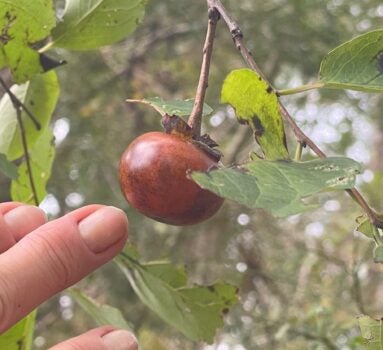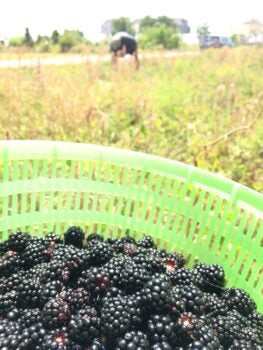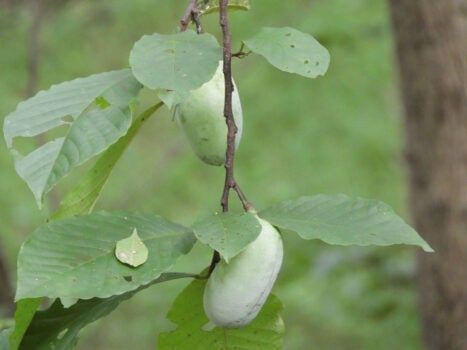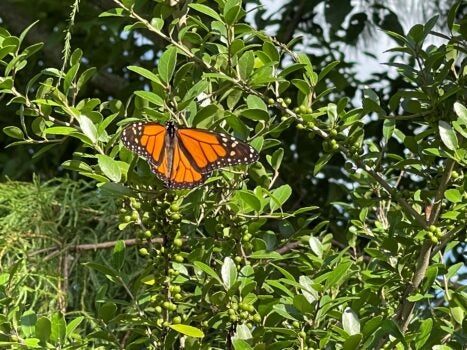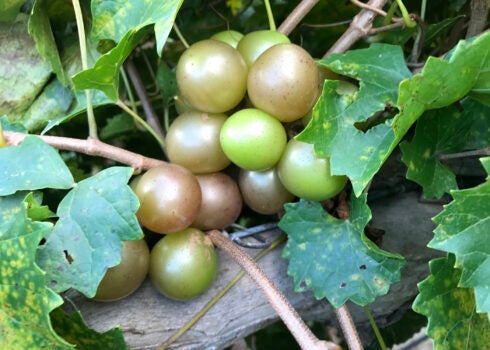Arboretum Paths: Foraging and preparing “wild edibles”
Published 10:58 am Wednesday, January 10, 2024
By Pat Drackett
The Crosby Arboretum/MSU Extension Service
Conifer cookies, yaupon tea, and pawpaw jam, oh my! There is such a high interest today in foraging for wild edibles, and the Arboretum has a program this Saturday day with Sandi Wicklund, Interpretive Refuge Volunteer for the U.S. Fish & Wildlife Service, who will cover how you can get started foraging for food, where to forage, what to make, whether you can find enough to have a meal, and ways to prepare what you harvest. Spring is coming, and so are obvious edibles to harvest.
I remember picking blackberries for cobbler as a child. Dewberries are great, too, which ripen mid to late spring before the blackberries. Blackberries have much longer, stouter canes. Many of us know dewberries as those pesky little briars that pop up in our garden and can be “ouchy” to remove. But they can be tamed and pruned to ramble in a thicket or cottage garden, yielding some delicious spring cobblers, or perhaps jam or jelly such as those crafted by Myra Smith, who is a regular at our November Piney Woods Heritage Festival.
I admire those with the interest and patience to pursue their passion to be “foragers” of wild foods. I’ve often said I’d rather have a good friend interested in the subject who would invite me over regularly for such pre-tested meals, than to have to locate the ingredients on my own. But many wild edibles are easily identified, such as muscadines, blueberries, often called “huckleberries”, mayhaw, native crabapples, and persimmons. All you need is a little (or a lot of) sugar and a good recipe!
One point to consider is the critical need for making a positive identification before collecting or consuming a plant collected in the wild. I remember the story told by Dr. Wayne Morris, who has long been connected with the Arboretum and occasionally leads field walks here. His cautionary tale involved collecting a specimen believed to be a water hickory (Carya aquatic), but he recognized too late that he had snipped a branch of poison sumac (Toxicodendron vernix). Even highly knowledgeable individuals can make an error now and then, so practice caution, and do not ingest any plant without being certain of its identity.
At our Hillside Bog Natural Area, we have Gaylussacia dumosa and Gaylussacia mosieri, two shrubs that, like other native blueberries, are often called huckleberries. They are relatives of blueberries and cranberries. Both of these plants are clonal shrubs with underground rhizomes, with the ability to resprout following fast-moving, low intensity fires historically caused by lightning strikes, and today, by prescribed burning.
Our Red bay (Persea palustris), and swamp bay (Persea borbonia) are related to the commercial bay from Europe. These trees have very aromatic leaves that can be used to flavor foods such as spaghetti sauce or stews. Sassafras albidum has also been used to flavor Cajun gumbo and stews. Rhus copallinum, winged sumac, has fruit that is eaten by many wildlife species. Juice from the fruits can be used to prepare a lemonade-like beverage.
To see and download an outstanding list of edible species called “Create an edible legacy: Make your own food forest garden”, go to the Extension website at https://extension.msstate.edu/ and enter the keywords “food forest” in the search field. This will be the first link that comes up.
Our current gallery exhibit features photographs by Earl Spiece, “A Morning Walk”. Earl’s images were captured at The Crosby Arboretum and around the Gulf Coast. His work is on display through the end of February. Learn how to process and prepare wild edibles in the “Living off the Land Foraging Series” Saturday, January 13, from 1:00 to 3:00 p.m. with Sandi Wicklund. Handouts and samples will be part of the workshop. Registration is required. Cost for members is $10, and $15 for non-members. Sunday, January 21 from 1:30 to 3:00 p.m. Pearl River County Extension Agent Dr. Eddie Smith will discuss how to keep bees in “Beekeeping for Beginners” Arboretum members attend for free! Cost for non-members is just $5.
Mark your calendar for Forge Day, a fun family event featuring blacksmithing and metalworking demonstrations on Saturday, January 27, from 9:00 a.m. to 2:00 p.m. For both members and non-members, entry is $6 for adults, and $3 for children 12 and younger. No pre-registration is required. The Crosby Arboretum’s Arbor Day Native Plant Sale will be held on Saturday, February 17, from 10:00 a.m. to Noon. Members may enter one hour early, at 9:00 a.m. The Arboretum is open Wednesday through Sunday from 9 a.m. to 5 p.m. (last admission taken at 4:00 p.m.) and located in Picayune at I-59 Exit 4, 370 Ridge Road. Leashed pets are welcome on our three miles of walking trails.


